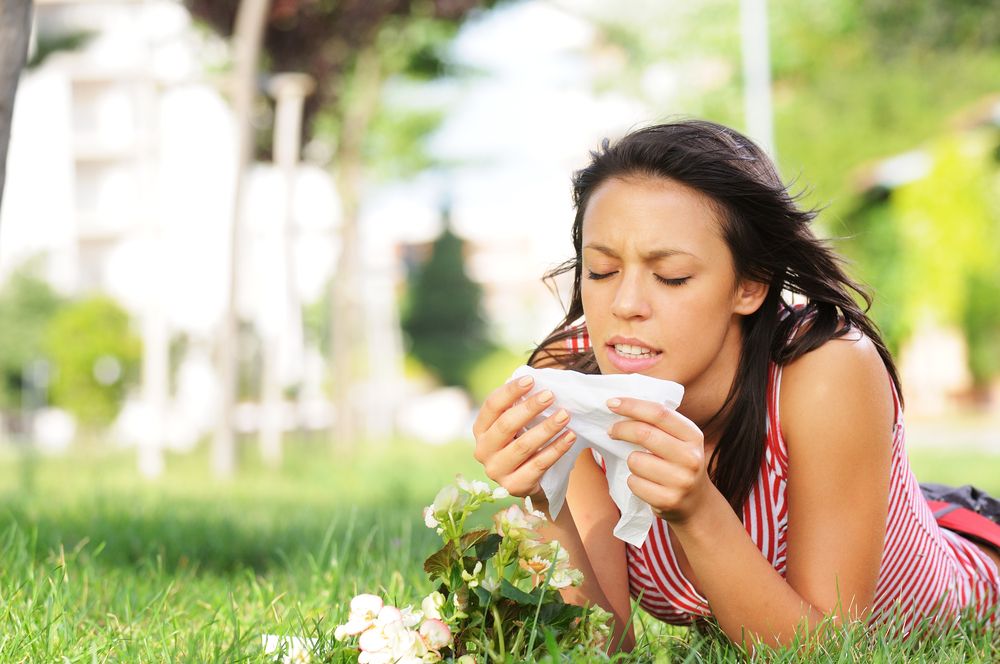5 Miserable Afflictions to Avoid This Spring

As joyful and gorgeous it may be, spring brings its own share of seasonal maladies, and nothing can kill the buzz of spring like an allergy or a bacterial infection.
With the warmer weather can come a host of pathogens that are less common during winter's frigid conditions. Here are a few things you should watch out for this season.
Lyme disease
Deer ticks (also called blacklegged ticks), which carry the bacteria that cause Lyme disease, are most active during the spring, early summer and fall. They live in shady and humid environments, and are often found at ground level, clinging to grass. They also live in lawns and gardens, especially at the edges of woods and old stone walls, according to New York's Department of Health.
The ticks don't jump or fly, and so they can only get onto people by direct contact. The risk of Lyme disease is greatest for people living in New England, the Mid-Atlantic States, and the upper Midwest, according to the Centers for Disease Control and Prevention.
To protect yourself from tick bites and Lyme disease, avoid walking in places where ticks are likely to live. The CDC recommends using insect repellents with DEET on the skin or clothing, or permethrin on clothing.
Allergic rhinitis
Sign up for the Live Science daily newsletter now
Get the world’s most fascinating discoveries delivered straight to your inbox.
In the spring, trees and grass start to produce pollen, to which many people are allergic. The most common symptoms of allergic rhinitis (also called hay fever) are stuffy and runny nose, watery and itchy eyes, sneezing, wheezing and cough.
There's really no good way to cure or prevent allergies, but the symptoms can be controlled.
"With allergies, there are really good treatments and there's no need to suffer," said Dr. Andy Nish, president of Allergy and Asthma Care Center in Gainesville, Ga. [9 Weirdest Allergies]
His first recommendation to people with allergies includes avoiding the outdoors on high pollen days, changing clothes when getting home, and keeping windows closed, Nish said.
Then there are medications to ease allergic reactions,such as nasal steroids and antihistamines, Nish said.
For people who have tried to avoid triggering their allergies but haven't seen improvement, and for those who are allergic to a number of allergens, some doctors may recommend trying immunotherapy and allergy shots, Nish said.
Eye allergies
Another type of allergy to pollen affects the eye, and is called allergic conjunctivitis allergy. In this condition, the membrane lining the eye and the inside of the eyelid becomes inflamed.
Doctors recommend staying away from pollen, lubricating the eye, and taking allergy medicine for relief.
Worsening of asthma & other health conditions
Spring allergies can worsen an existing asthma or sinus problem, Nish said.
Inhaling pollen can trigger asthma attacks and increase inflammation of the airways in people who have asthma. Similarly, people with sensitive sinuses can be irritated by pollens.
Some people may develop eustachian tube dysfunction, in which the narrow tube that runs from the middle ear to the back of the nose gets blocked because of inflammation and extra mucus, Nish said.
Flu
The flu season is not over yet. National data from the first weeks of April show that although seasonal influenza activity is declining, flu viruses continue to circulate and cause illness in parts of the U.S.
For example, in New York State, the numbers from the second week of April show influenza is still widespread with more than 2,500 lab-confirmed cases.
To avoid getting the flu, people should get the flu shot and take everyday preventive actions to stop the virus' spread, the CDC says. These include washing hands, limiting contact with sick people, and avoiding touching your eyes, nose and mouth.
Email Bahar Gholipour. Follow us @LiveScience, Facebook & Google+. Original article on Live Science.












